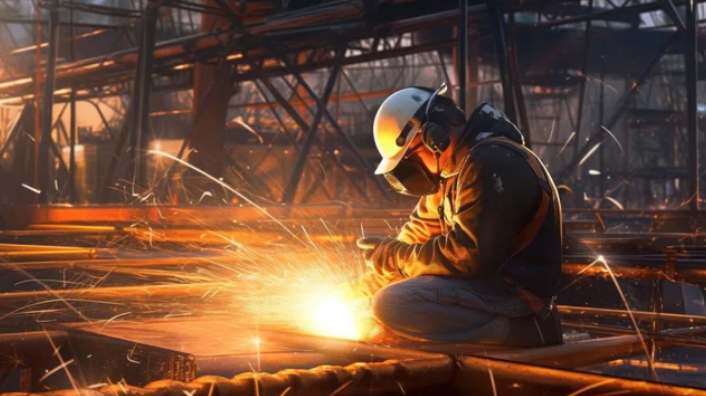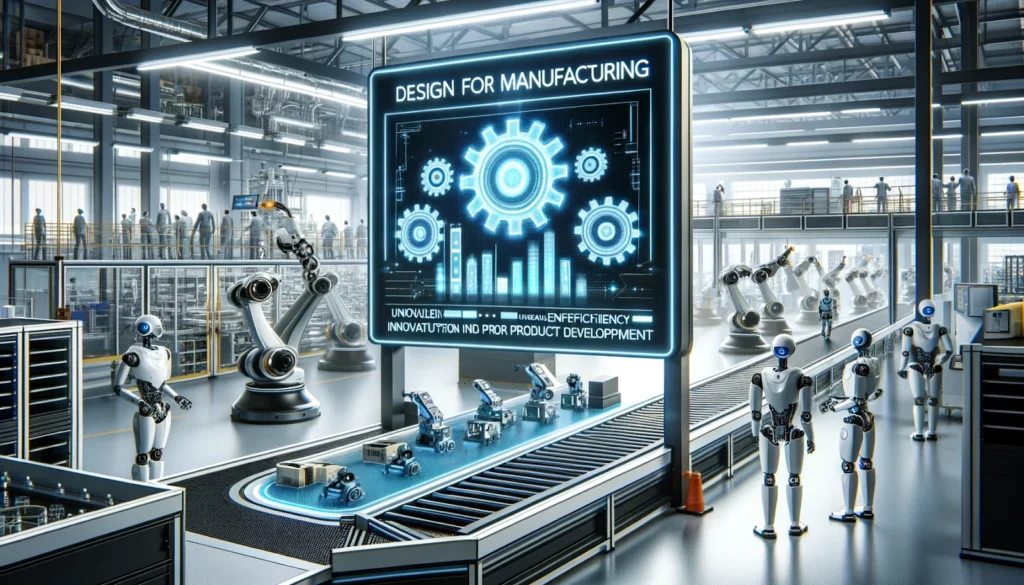
A Deep Dive into Smart Manufacturing Solutions in On-Demand Manufacturing

The landscape of manufacturing is undergoing a revolutionary transformation, driven by advancements in technology. One of the significant trends shaping the future of manufacturing is the adoption of smart manufacturing solutions, especially in the context of on-demand manufacturing. On-demand manufacturing refers to the production of goods in response to customer demand, minimizing inventory and waste. In this article, we will delve into the intricacies of smart manufacturing solutions and explore how they are reshaping the on-demand manufacturing sector.
Understanding Smart Manufacturing
Smart manufacturing, also known as Industry 4.0, is the integration of advanced technologies into the manufacturing process to create a more efficient and connected system. Key components of smart manufacturing include the Internet of Things (IoT), artificial intelligence (AI), data analytics, and automation. These technologies work together to optimize production processes, enhance decision-making, and improve overall efficiency.
Integration of IoT in On-Demand Manufacturing
The Internet of Things plays a pivotal role in smart manufacturing by connecting machines, sensors, and devices in a network. In on-demand manufacturing, IoT enables real-time monitoring of the production process. For example, sensors on manufacturing equipment can provide data on equipment performance, maintenance needs, and product quality. This real-time data facilitates better decision-making, reduces downtime, and enhances overall productivity.
Artificial Intelligence in On-Demand Manufacturing
Artificial intelligence is a game-changer in on-demand manufacturing. AI algorithms can analyze vast amounts of data to identify patterns, predict equipment failures, and optimize production schedules. Machine learning, a subset of AI, enables systems to learn from experience and continuously improve. In on-demand manufacturing, AI helps in demand forecasting, resource allocation, and quality control, leading to more responsive and agile production processes.
Data Analytics for Informed Decision-Making
The abundance of data generated in the manufacturing process can be leveraged through advanced analytics. Data analytics tools can extract valuable insights from production data, helping manufacturers make informed decisions. In on-demand manufacturing, these insights are crucial for adapting to changing customer demands, optimizing inventory levels, and streamlining supply chain operations.
Automation and Robotics in On-Demand Manufacturing
Automation and robotics are integral components of smart manufacturing. In the context of on-demand manufacturing, robotic systems can be programmed to handle tasks such as material handling, assembly, and packaging. This not only reduces the need for manual labor but also enhances precision and efficiency. Automated systems can quickly adapt to changes in production requirements, making them well-suited for on-demand manufacturing scenarios.
Challenges in On-Demand Manufacturing
While smart manufacturing solutions offer significant benefits, their implementation comes with challenges. Security concerns, especially regarding the protection of sensitive manufacturing data, are paramount. Additionally, the upfront costs of implementing smart manufacturing technologies can be substantial. Manufacturers need to carefully assess their needs, capabilities, and long-term goals to ensure a successful and cost-effective integration.
- Data Security and Privacy Concerns
The increased connectivity and data sharing inherent in smart manufacturing raise significant concerns about the security and privacy of sensitive manufacturing data. Safeguarding intellectual property and preventing unauthorized access become critical challenges.
- High Initial Costs
The implementation of smart manufacturing solutions often requires a substantial upfront investment in technology infrastructure, including sensors, IoT devices, and AI systems. Small and medium-sized enterprises (SMEs) may find it challenging to justify these initial costs.
- Integration with Existing Systems
Many manufacturing facilities already have established systems in place. Integrating new smart manufacturing technologies with existing systems can be complex and may require substantial time and resources.
- Workforce Skill Gaps
The shift toward smart manufacturing introduces a need for a workforce with advanced skills in data analytics, AI, and technology management. Bridging the skills gap through training and education becomes crucial for successful implementation.
- Interoperability Issues
The compatibility of different smart manufacturing components and technologies is a common challenge. Ensuring seamless interoperability between various systems and devices is essential to avoid disruptions in the manufacturing process.
- Regulatory Compliance
Adhering to industry regulations and standards, particularly in sectors with stringent compliance requirements, poses an ongoing challenge. Navigating the complex landscape of regulations while implementing cutting-edge technologies requires careful consideration.
- Scalability
As manufacturing demands fluctuate, the ability to scale smart manufacturing solutions becomes crucial. Ensuring that the implemented technologies can seamlessly adapt to changes in production volume and product variety is a continual challenge.
- Dependency on Connectivity
Smart manufacturing heavily relies on robust and reliable connectivity. Any disruptions in communication networks can lead to downtime and hamper the effectiveness of real-time monitoring and decision-making processes.
- Risk of Over-Reliance on Automation
While automation enhances efficiency, there is a risk of over-reliance on automated processes. Manufacturers must strike a balance to ensure that human expertise remains integral, especially in decision-making and complex problem-solving scenarios.
- Environmental Impact
The increased use of technology in manufacturing may contribute to electronic waste and energy consumption. Balancing the benefits of smart manufacturing with its environmental impact is a challenge that requires sustainable practices and technology design considerations.
In navigating these challenges, manufacturers can develop comprehensive strategies that address both the technological and organizational aspects of smart manufacturing implementation. Overcoming these hurdles is essential for unlocking the full potential of smart manufacturing in the context of on-demand production.
How can On-Demand Manufacturing be a smooth process? Here are some solutions:
Data Security and Privacy Concerns
- Implement robust cybersecurity measures, including encryption and secure access controls.
- Regularly update security protocols to address evolving threats.
- Provide employee training on cybersecurity best practices to minimize internal risks.
High Initial Costs
- Explore government grants and incentives that support the adoption of smart manufacturing technologies.
- Consider phased implementation, starting with high-impact, low-cost solutions.
- Collaborate with technology vendors for flexible financing options or leasing agreements.
Integration with Existing Systems
- Conduct a thorough assessment of existing systems to identify integration challenges.
- Utilize middleware solutions to bridge the gap between different technologies.
- Seek assistance from experienced system integrators to streamline the integration process.
Workforce Skill Gaps
- Invest in training programs to upskill existing employees in data analytics, AI, and automation.
- Collaborate with educational institutions to develop tailored training programs.
- Hire skilled professionals or consultants to guide the workforce during the transition.
Interoperability Issues
- Standardize communication protocols to enhance interoperability.
- Choose technologies from vendors that prioritize open standards.
- Engage in industry collaborations to develop common interoperability standards.
Regulatory Compliance
- Stay informed about industry regulations and proactively address compliance requirements.
- Collaborate with regulatory bodies to establish guidelines for smart manufacturing practices.
- Implement tools and processes that ensure traceability and compliance documentation.
Scalability
- Choose scalable technologies that can easily adapt to changes in production volume.
- Design systems with modular architectures to facilitate seamless scalability.
- Regularly assess and update technology infrastructure to accommodate growth.
Dependency on Connectivity
- Implement redundancy and failover systems to minimize the impact of connectivity issues.
- Invest in reliable and secure communication networks.
- Utilize edge computing to reduce dependence on centralized systems and improve local decision-making.
Risk of Over-Reliance on Automation
- Design human-machine collaboration models to maximize the strengths of both.
- Implement transparent decision-making processes to build trust in automated systems.
- Foster a culture that encourages human oversight in critical decision points.
Environmental Impact
- Adopt energy-efficient technologies and equipment.
- Implement recycling programs for electronic components.
- Explore sustainable manufacturing practices, such as 3D printing with eco-friendly materials.
By addressing these challenges with proactive and strategic solutions, manufacturers can navigate the complexities of smart manufacturing implementation and unlock the full potential of on-demand production. Successful integration requires a holistic approach that considers technological, organizational, and environmental factors.
In summary
Smart manufacturing solutions are reshaping the on-demand manufacturing sector, offering unprecedented levels of efficiency, agility, and responsiveness. The integration of IoT, AI, data analytics, and automation is transforming traditional manufacturing processes into dynamic, data-driven systems. As on-demand manufacturing continues to gain prominence, businesses that embrace and adapt to these smart manufacturing trends are likely to thrive in an era of rapid technological advancement.
Recent Post




